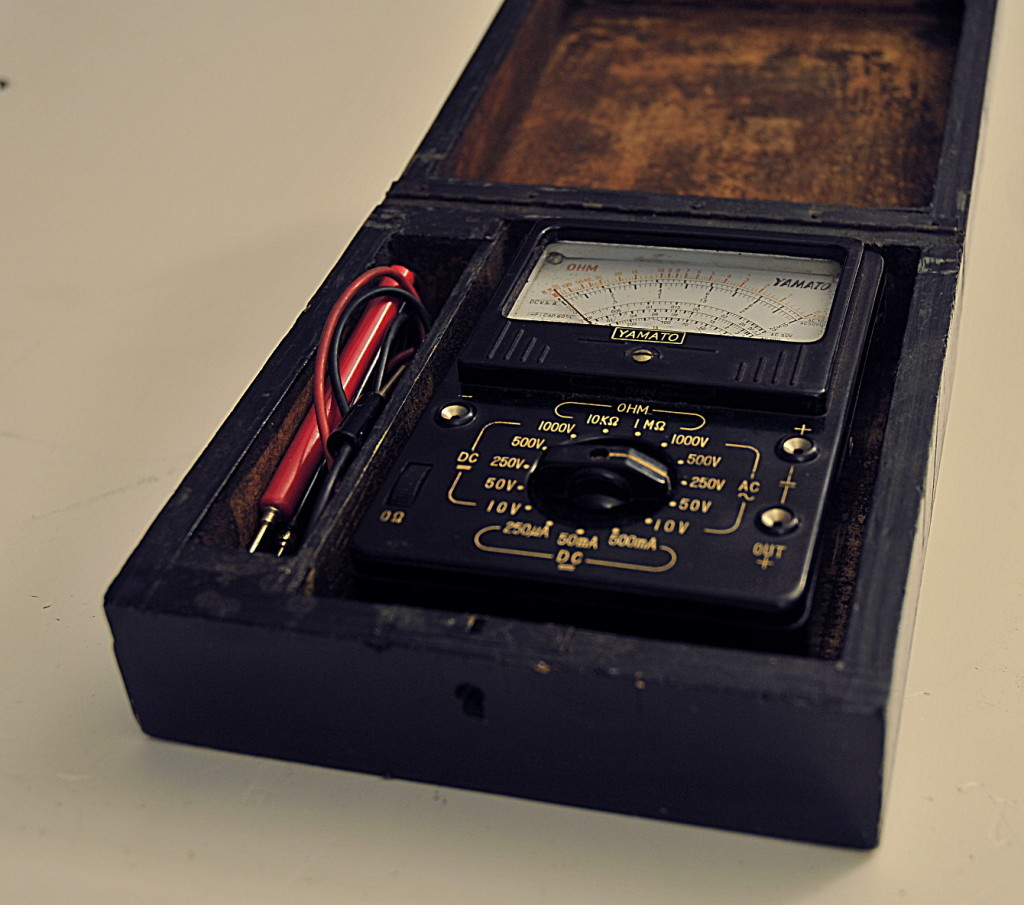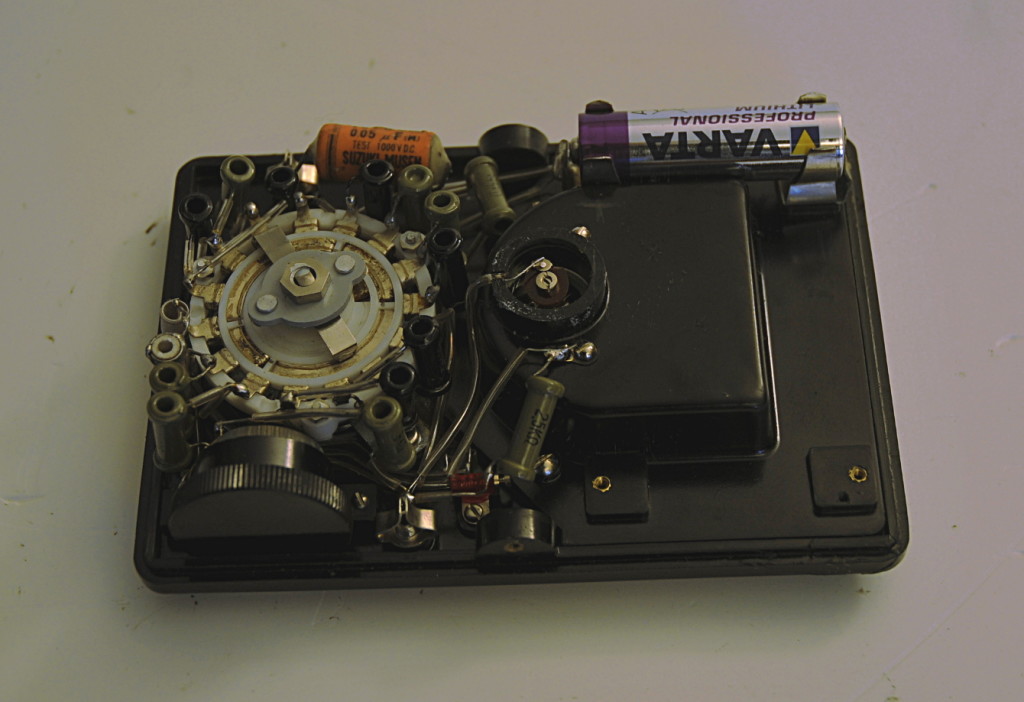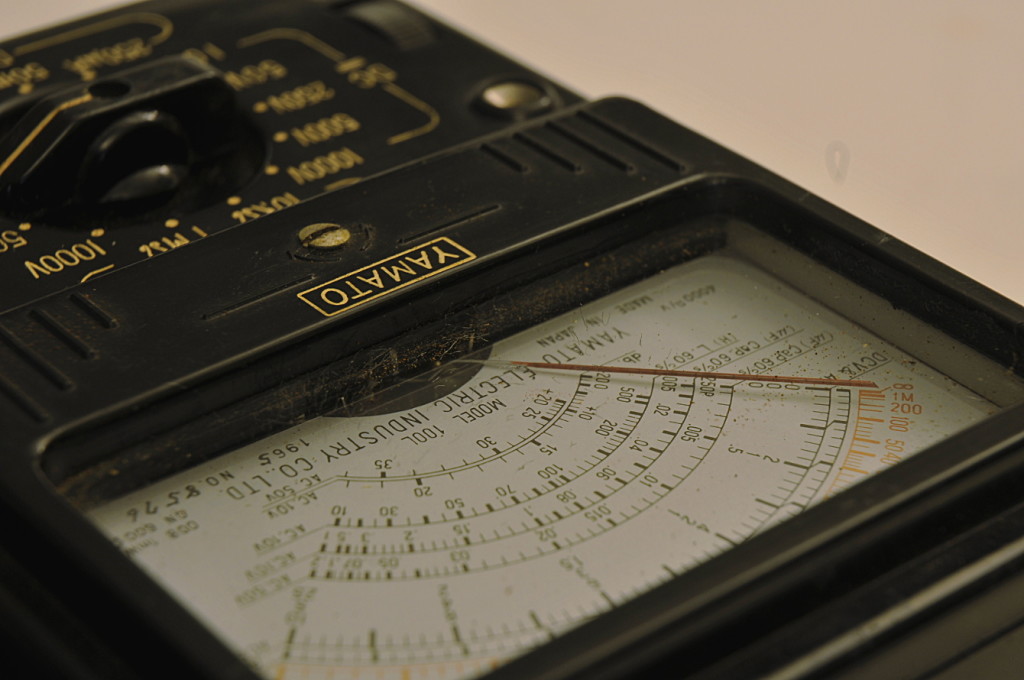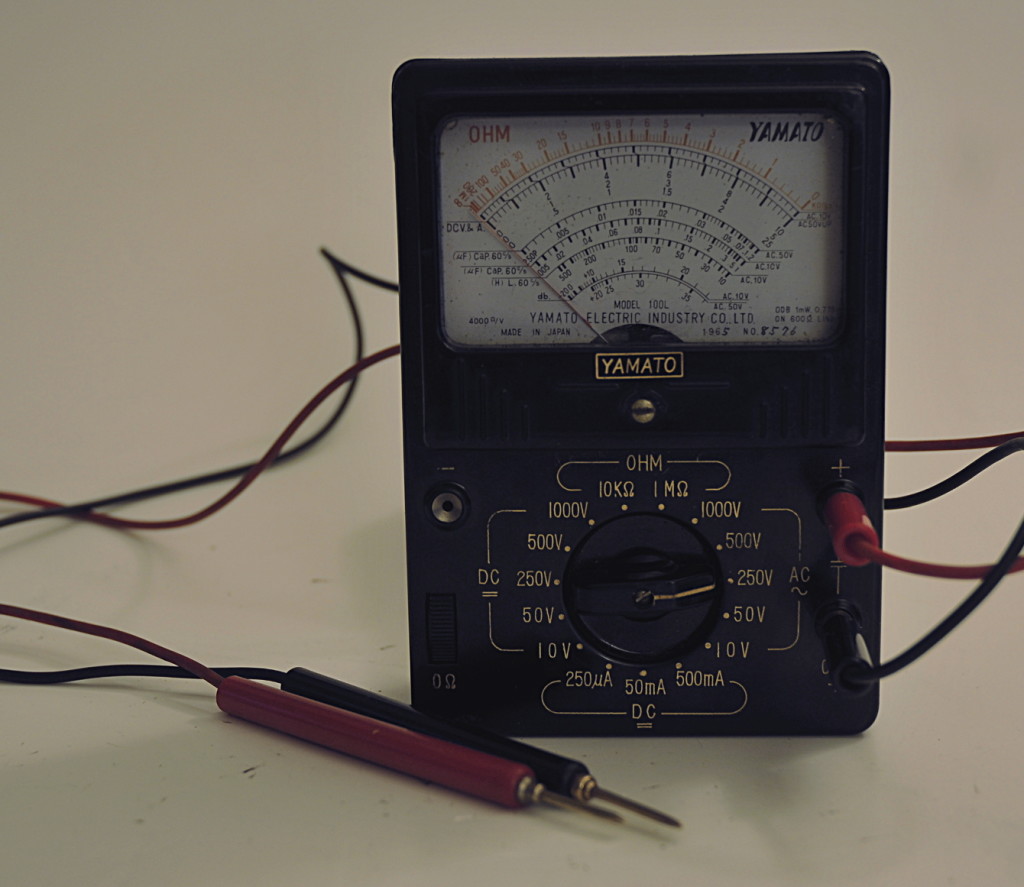This is a very smal Japanese Multimeter made in 1965. I could not find information about it so I have no clue about the specs or modes. I got it from a friend who found it at a ham fest. It is in very nice shape.
It is well made. Look at that beautiful ceramic switch.
It is still spot on and that is not often the case with old analog meters. I also have a pocket size Hansen, That is also Japanese and made in the 60’s. It uses the same resistors and trimpot (the little red thingy near the zero potmeter).
Besides resistance It can measure inductor’s and capacitors. The down side is dat you need an external source to do that. In that time not a problem. Every tube equipped radio and TV had the needed voltages. It is a bit primitive but in those days the alternative was a LCR bridge and beside big they where not always very user friendly in use. Do not forget this meter is only 9x13x4,5cm.
There are three inputs. The input that is named out+ is something many meters had back then. The AC voltage measurement was done with diodes. You can use the AC function to measure DC+AC. But that was not handy in tube equipment where huge DC voltages were normal. So they made an extra input that inserted a cap between that bus and the normal + input. But I have no clue why that input is called output.
The resistance mode is a bit unusual. It uses only one 1,5V battery and the ranges are normally a multiplier. So you read 50 in de x1k range for a 50k resistor. Here however you need the 1 M scale and 50 is 50k. So 1M is the full scale value and you read it in k-ohm. The 10K range is read in ohm. The scale is a bit “cramped” and has no mirror but it’s layout is not bad. Many analog meters have scales that are hard to read because the minor marks from the scale are different in every range.




